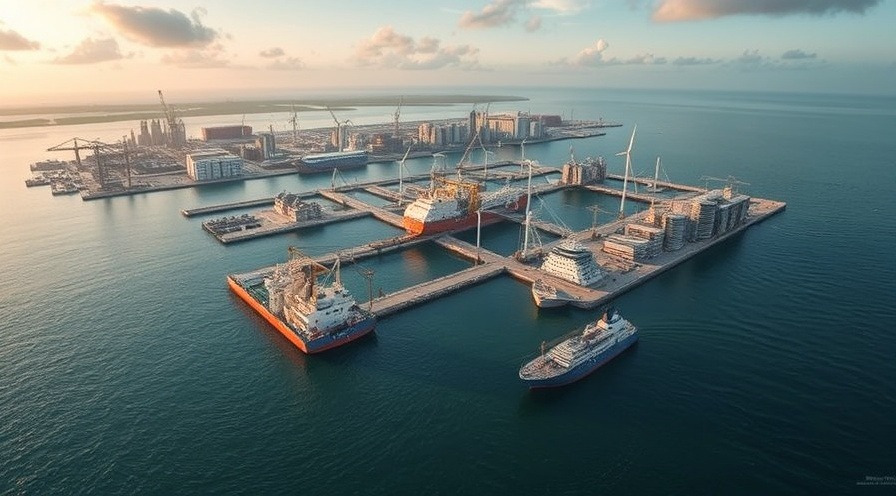
Building the Future: The Critical Role of Offshore Infrastructure
As urban populations swell, innovative strategies for coastal and offshore development become essential. Taking a closer look at the increasing demand for offshore infrastructure reveals its pivotal role in supporting both habitation and various industries. In fact, since the early 2000s, approximately 30% of the world’s oil and 27% of its gas have been extracted from offshore sites, underscoring the growing reliance on our oceans for essential resources.
Why Coastal Development Matters
Ports are the lifeblood of offshore wind energy projects, acting as launch points for the construction and maintenance of floating wind farms. By facilitating the transport of materials—including massive wind turbines—from the mainland to offshore locations, these ports play a crucial role in the sustainable energy landscape. Without efficient ports, achieving our renewable energy goals would be daunting.
The Vision of Floating Cities
Innovative concepts like Malaysia's BiodiverCity highlight the potential for urban habitation on water. Even though this remains primarily a vision for the future, it poses interesting challenges for structural integrity and safety in marine environments. While DNV does not yet provide specific standards for floating urban infrastructure, their existing guidelines, such as the DNV RP-C203 for fatigue and DNV CN30 for plate buckling, lay a solid foundation for future adaptations.
The Importance of Structural Safety Standards
Essentially, structural safety standards play a critical role in ensuring that coastal and offshore developments are robust and reliable. These guidelines cover aspects such as design loads, material properties, construction practices, as well as ongoing maintenance and inspection. They are designed to prevent catastrophic failures and ensure that structures can resist the environmental forces they encounter.
Key Components of Structural Safety
Design Loads: Specifications identify the maximum loads structures must withstand—including live, dead, and environmental loads from wind or seismic activity.
Material Properties: Rigorous requirements ensure that construction materials are strong and durable enough for marine conditions.
Construction Practices: Best practices guide builders on the methods needed to maintain the integrity of structures.
Maintenance and Inspection: Guidelines help detect potential issues before they escalate, ensuring long-term sustainability.
How DNV Standards Are Shaping the Future
DNV standards are particularly significant for ensuring safe and sustainable construction in maritime and offshore contexts. They provide comprehensive frameworks that cover vital areas like load calculations and material specifications, fostering a safer coastal development environment.
Conclusion: The Path Forward
As we look to the future of coastal infrastructure, understanding the pivotal role that DNV standards play is essential for both industry professionals and everyday citizens. Embracing these standards not only protects lives and investments but also enables us to harness the vast potential of our oceans responsibly.
 Add Row
Add Row  Add
Add 

 Add Row
Add Row  Add Element
Add Element 




Write A Comment